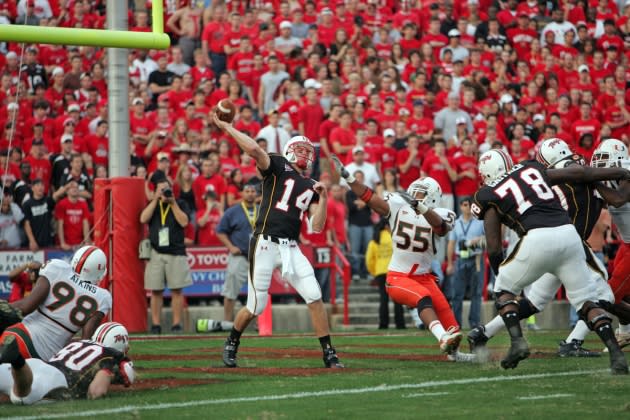NCAA To Settle Class Action Lawsuit, Bringing $2.77B Windfall To College Athletes Past And Present

It’s a new era in college sports, as the National Collegiate Athletics Association and the five biggest athletic conferences have agreed to a $2.77 billion settlement of a class-action lawsuit, the Wall Street Journal reported.
Details are still being worked out, but what it means is schools can pay athletes directly, sharing with them a portion of the lucrative revenue streams for merchandising, TV rights, ticket sales and other deals.
More from Deadline
NCAA Women's Basketball Championship Audience Tops Men's For The First Time Ever
South Carolina Takes 2024 NCAA Title In Most-Watched Women's College Basketball Game On Record
Iowa-UConn NCAA Women's Basketball Semifinals Sets Viewing Record
The settlement agreement resolves a case that began in 2020. The lawsuit sought back pay for athletes, as well as a cut of future broadcast revenues.
Today’s settlement is the latest in the slippery slope of the last few years that has erased many of the rules that stood for a century or more for college athletes. While under-the-table payments from boosters has always been a part of the scene for top athletes, it was only recently that the landscape began to transform with the institution of name-image-licensing deals.
Some of those above-board deals can generate millions of dollars for individuals at the top of their game in various sports.
Now, the biggest barrier has been removed, and colleges can pay players directly without the shell game of NIL deals.
The new system will give Division I schools the ability to distribute roughly $20 million a year to their athletes, the WSJ reported, citing sources.
“All of Division I made today’s progress possible, and we all have work to do to implement the terms of the agreement as the legal process continues,” said NCAA President Charlie Baker in a joint statement with the commissioners of the five conferences named as co-defendants in the lawsuit. “We look forward to working with our various student-athlete leadership groups to write the next chapter of college sports.”
With the new rules, observers will wonder about competitive balance, at least in the revenue sports of football and basketball. The institution of NIL deals has already created a kind of free agency for athletes, who are now free to go to the highest bidder for their services.
“It’s long overdue and a long time coming,” said Jeffrey Kessler, one of the lawyers representing the plaintiffs, speaking to the WSJ. “It’s finally getting really close to a system that, for the first time, will treat the athletes the way they should be treated.”
The WSJ, again citing people familiar with the matter, reported there are two components to the tentative agreement. The NCAA has agreed to pay $2.77 billion in damages over a 10-year period. How this sum will be distributed is unclear.
Second, and most important, schools can pay athletes a portion of the revenue they help generate. The settlement agreement calls for schools to pay athletes 22% of the average annual athletic department revenue among schools in the top conferences. According to people familiar with the matter, that figure is roughly $20 million per school.
The WSJ, citing sources, predicted that the soonest the new system could take effect would be the 2025-26 academic year.
Best of Deadline
Hollywood & Media Deaths In 2024: Photo Gallery & Obituaries
TV Cancellations Photo Gallery: Series Ending In 2024 & Beyond
2024 Premiere Dates For New & Returning Series On Broadcast, Cable & Streaming
Sign up for Deadline's Newsletter. For the latest news, follow us on Facebook, Twitter, and Instagram.

